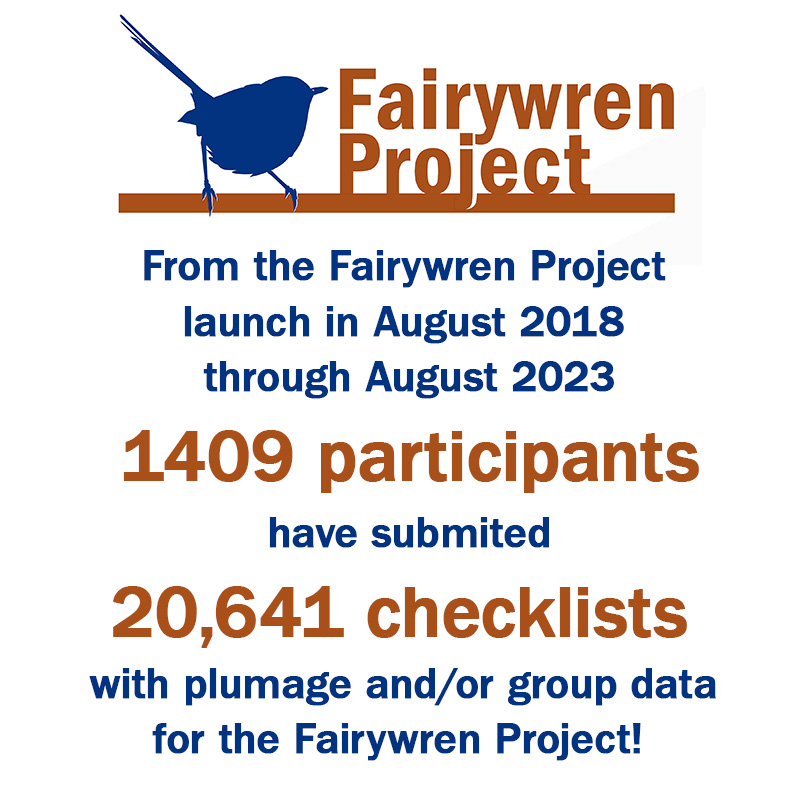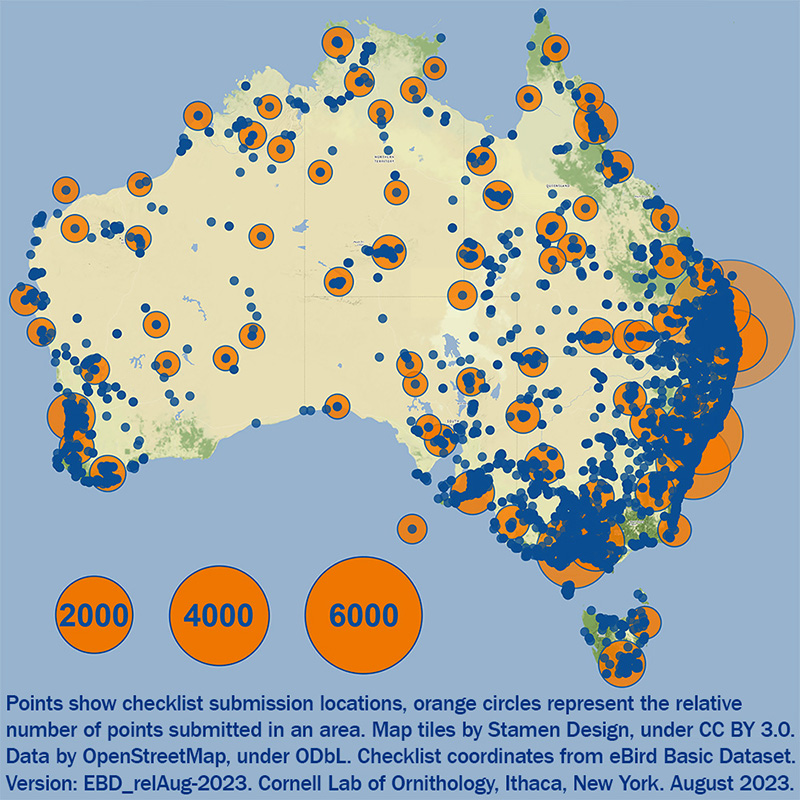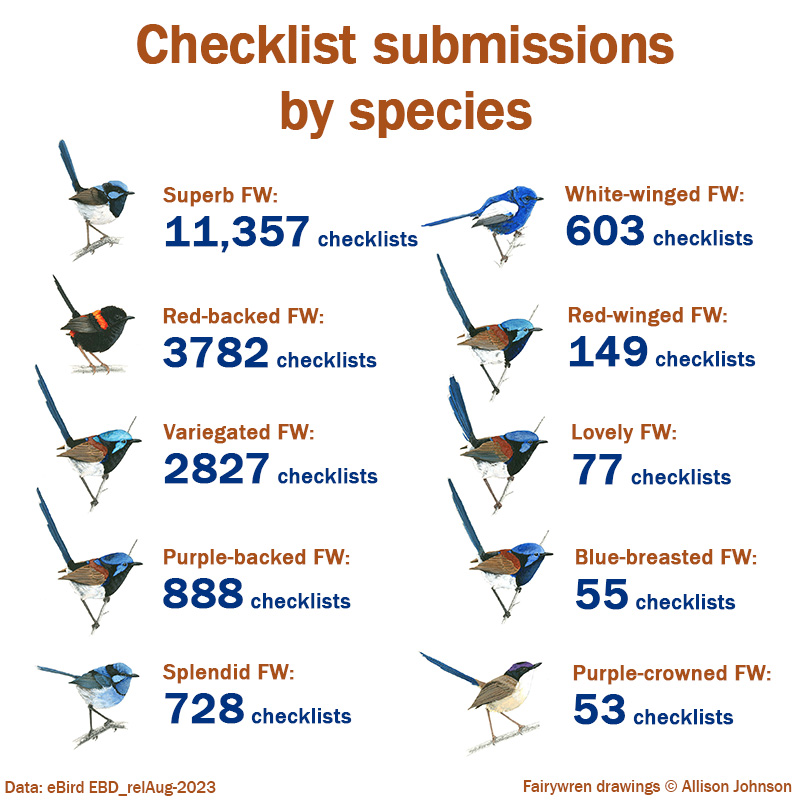Hi all,
We’re back with another update! This time we have some preliminary results from the plumage data you’ve been sending us for the past five(!) years.
One of the fairywren traits we’re interested in is year-round ornamented (bright) plumage. Fairywrens moult or replace their body feathers twice per year. Males typically moult into a dull brown, non-breeding plumage at the end of the breeding season, then moult back into their ornamented breeding plumage prior to the beginning of the next breeding season.
However, male Lovely Fairywrens keep their ornamented breeding plumage year-round and old males from other species are known to remain in ornamented plumage year-round.
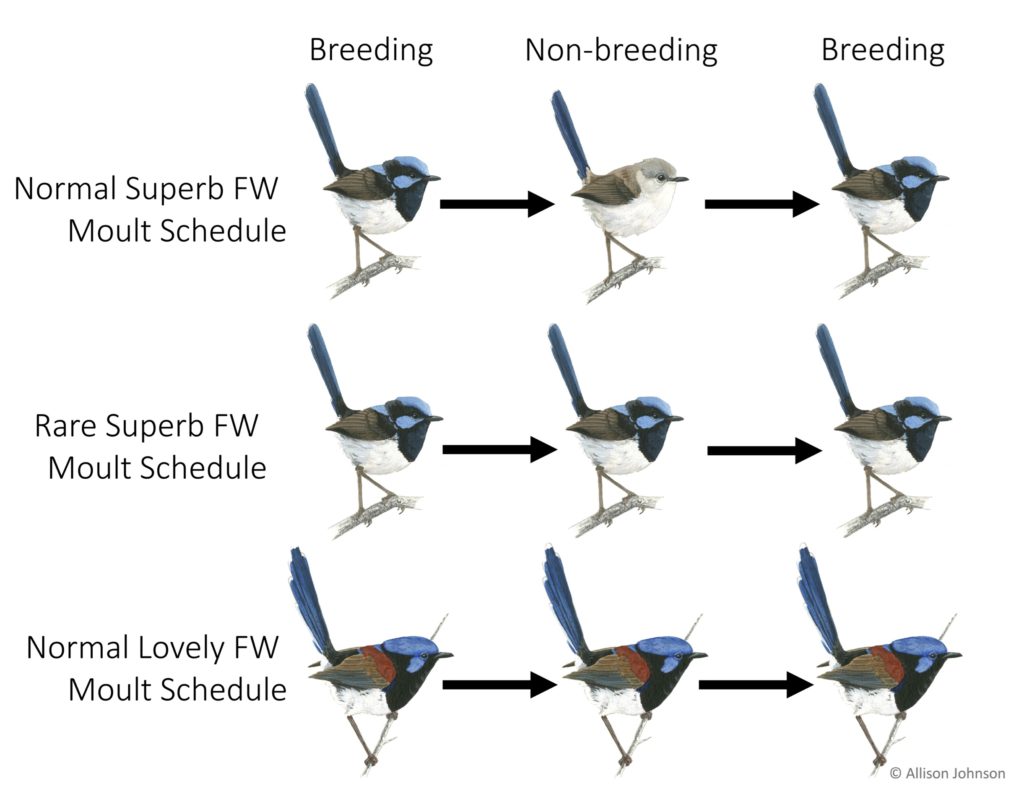
Previous research from Andrew Cockburn’s group in Canberra shows that old male Superb Fairywrens can remain in ornamented plumage year-round and that early-moulting males sire more offspring than males that moult into ornamented plumage late in the non-breeding season. This suggests that females pay attention to when males moult, likely because male fairywrens begin courting females as soon as they acquire ornamented plumage. However, early-moulting males suffer disproportionate mortality over late-moulting males, suggesting that early moult into ornamented plumage is likely costly for survival.
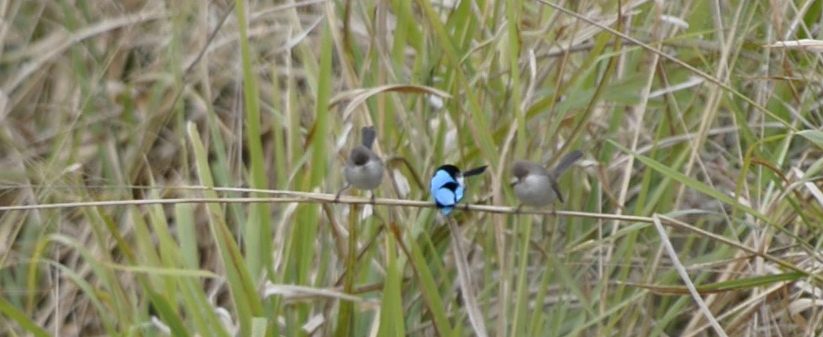
A male Superb Fairywren in ornamented plumage (middle) courting a female on the viewer’s left.
But, while we know this year-round plumage trait can occur, we don’t know how common it is across other populations. That is where your data come in!
Our questions is: how common is year-round ornamented plumage?
To start, we’re focusing on the species we have the most data on, the Superb Fairywren.
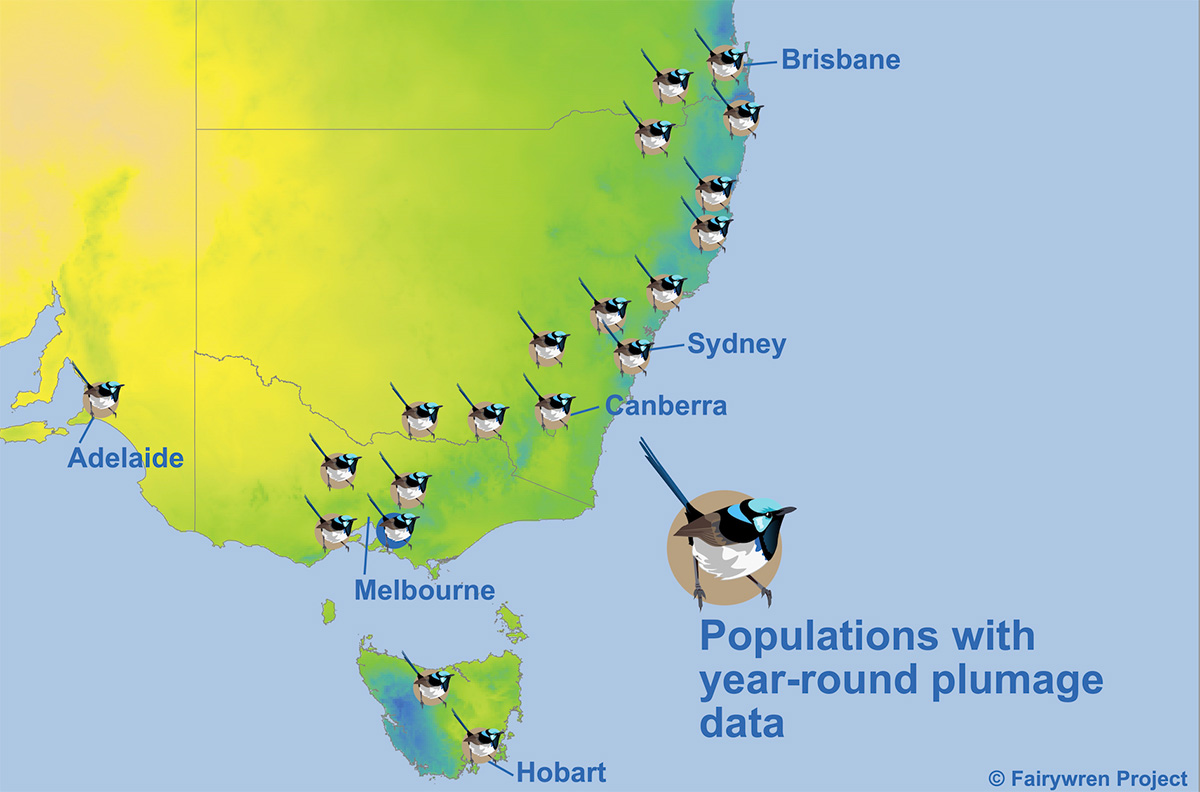
The map above shows 20 major populations of Superb Fairywrens we’ve identified in your sightings that cover most of the species’ range.
We’ve split the first four years of your data in to four yearly periods extending from August to July, then we split each year into 15-day intervals. For example, the plot below shows the number of birds seen in 15-day intervals from August 2020 to May 2021 in the population to the southeast of Melbourne in the map above (blue dot).
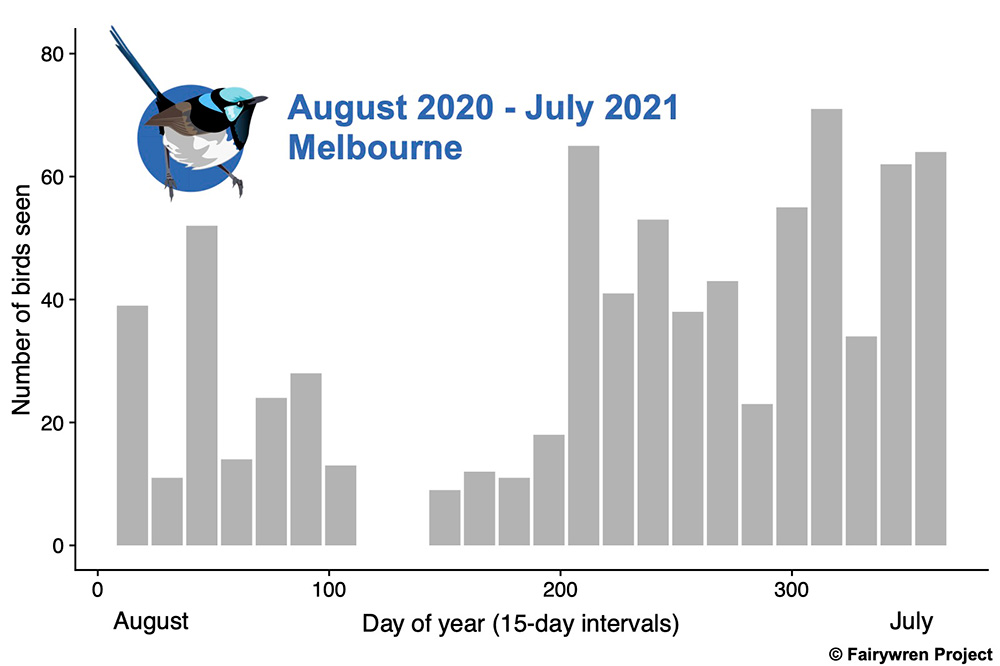
Then for each of these periods, we counted how many individual Superb Fairywrens of each plumage type were reported and converted these to percentages for each 15-day period (plot below).

You can see for this population near Melbourne in March and April 2021 (days 240-284), no males in ornamented plumage were reported even though 134 Superb Fairywrens were seen over a 45-day period! This suggests that year-round ornamented plumage did not occur in this population in that year, or that it was so rare that it was not detected.
Now we’re repeating this process for all 20 populations across the species range and comparing the presence and absence of year-round ornamented plumage to weather conditions. We’ll keep you updated as we learn more. In the meantime, keep letting us know what plumage types you’re seeing!
As always, thank you for all your effort so far. We’re really excited about these data.
Joe and Allison
Below you'll find the newest numbers for the project:
